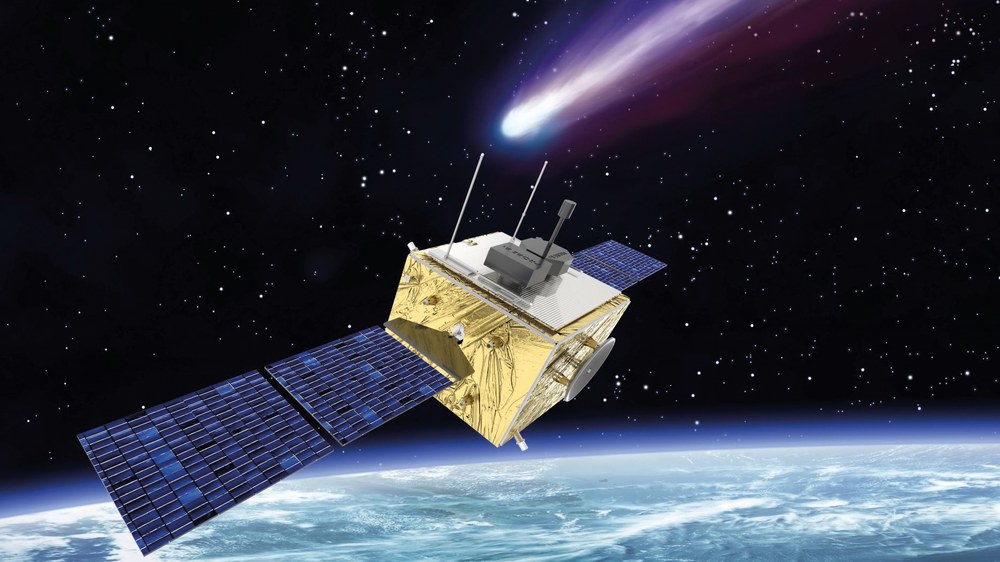Comet Interceptor
Comet Interceptor is the first mission selected in ESA’s F-class programme. The mission’s primary science goal is to characterise, for the first time, a dynamically new (long-periodic) comet or interstellar object, including its surface composition, shape, and structure, and the composition of its gas coma and plasma environment. Exploring comets is the main way to learn about the origins of our solar system, as we can study material that has been the least altered despite 4.5 billion years history. Yet, all comets that have been encountered by spacecrafts are short-period comets: objects that have undergone many changes on their surfaces, hiding their original appearance and make-up. A true, pristine comet has yet to be encountered and explored.
Comet Interceptor comprises three spacecrafts that will provide multi-point measurement of the nucleus and the coma/solar wind interaction region. The composite spacecraft will launch with ESA’s Ariel in 2028 and wait at L2 for a suitable target, then travel as one unit before the three modules separate a few weeks prior to intercepting the comet. Each module is equipped with a complementary science payload, providing different perspectives upon the comet’s nucleus and its gas, dust, and plasma environment. The main spacecraft (A) and one secondary (B2) are provided by ESA. The other companion spacecraft (B1) has been developed by JAXA.
The mission’s instrument suite draws on heritage from other missions, including a camera based on the one currently flying on the ExoMars Trace Gas Orbiter, and a mass spectrometer like those that flew on ESA’s Rosetta. PF contributes hardware elements to both of these core instruments, the largest contribution being the focal plane array for the camera. PF contributes to the science with several Co-Is having extensive expertise inherited from previous missions such as Rosetta. We also provide scientific leadership for the ‘Near Environment’ working group, in charge of studying the comet’s activity and interface between nucleus and coma.
Hardware Participation of the DLR Institute of Planetary Research
- (Comet Camera – Multispectral imager)
- MANIaC (Mass Analyzer for Neutrals and Ions at Comets)
Scientific Participation of the DLR Institute of Planetary Research (Spacecrafts A/B1/B2)
- Every Co-I will have access to data from all instruments on the mission

